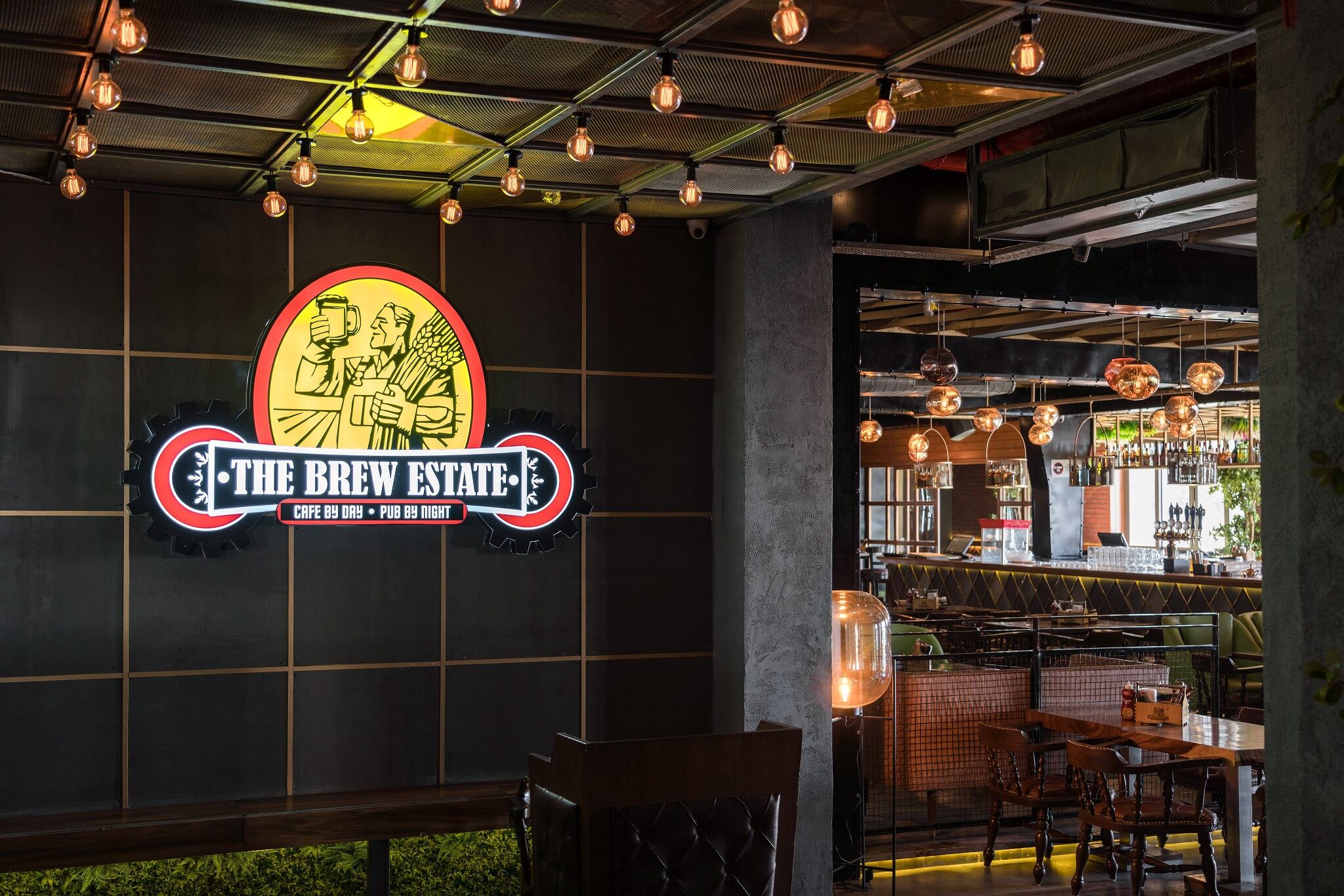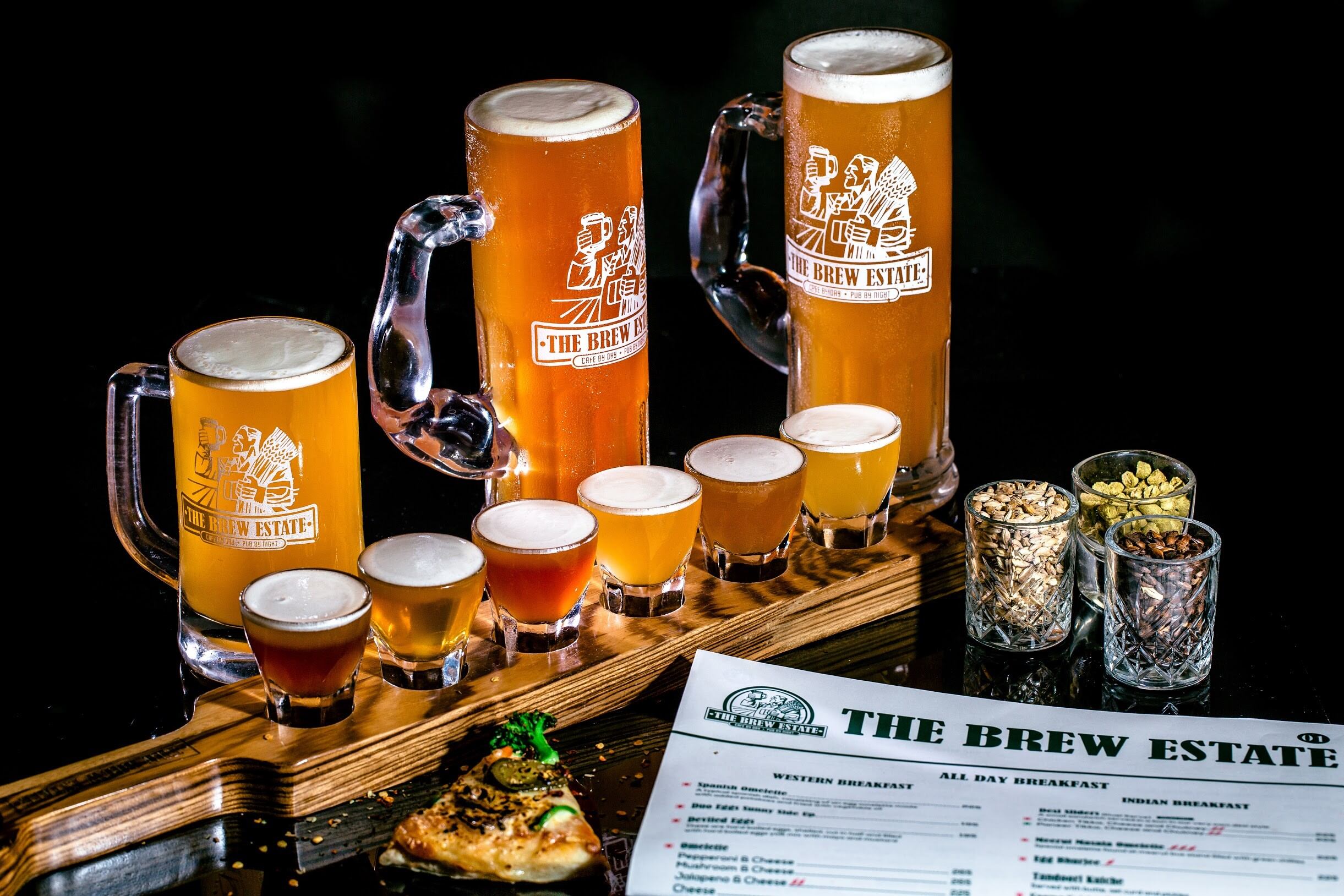First, open a bottle of cold beer and upturn it into a glass half-filled with water. Leave it there for a few minutes as you watch a slick of clear oil fall out of the bottle into the water.
When the surge turns into a trickle, and the bottle appears about a quarter emptier, now is the time to drink it—the beer, not the slick. But even after taking this approach, most seasoned drinkers won’t feel very satisfied. Indian beer is hardly made for the enthusiast.
Indian beers tend to fall into two categories: glycerine-laden mass-produced lagers and local heavy hitters—literally—like the 7% Haywards 5000 or the even stronger Knock out. Locals will tell you these are especially popular among depressed men and long-distance lorry drivers.
Arundeep Singla is on a mission to change this reality. The founder and managing director of The Brew Estate is an entrepreneur from Punjab who is obsessed with BrewDog, the Scottish craft brewer, and is determined to give Indians a taste of what they are missing. There’s no need to remove glycerin from his brews.
A young craft beer scene
Singla is currently patron of seven brew pubs in three north Indian states, though he is intent on a furious expansion across India. He plans to open a further 30-40 outlets in the next three years, mostly in India but some overseas as well.
“The beer industry is predominately lager and strong beer. There was no flavour as such, no innovation for many decades. It is now starting to open up to craft beer, which is attracting youth and new consumers,” Singla said.
Blink and you’re likely to miss India’s craft scene. It originated just four years ago with the arrival of Delhi-based Bira 91, and a few have followed slowly in a segment hampered by heavy regulation and taxation that varies wildly across 29 states and nine union territories.
“In our country of 1.4bn people, there is no craft beer industry as such, but more microbreweries are starting to arrive,” said Vikram Qanungo, former finance chief of Bira 91 and now advisor to The Brew Estate.
“This is primarily due to a licencing issue whereby states haven’t previously given licences for microbreweries. But now some states are gradually starting to adopt these licences and at our rough estimate, there are about 200-250 in four or five states. As more states open up, a lot more players are waiting to enter the business.”
'We spotted the opportunity - and were able to scale up very fast'
The Brew Estate, launched 2016, has since become one of the country’s leading craft brands. In the last three years it has released more than 60 varieties, with a new one coming out weekly.
Its founder has taken a radically different approach to making and selling beer in a country where most microbreweries are standalone businesses that have difficulty achieving any real scale. It does not help them that under local regulations, a brewer cannot sell beer anywhere other than at its own outlets.
The Brew Estate is Singla’s second start up venture, the first being a spirits venture in Delhi called Rock & Storm. When drawing up plans for the new business, he deliberately shied away from metro cities like Delhi and Mumbai, thereby bucking convention, and turned towards smaller towns, such as Patiala, a tier 2 city in Punjab, and tiny Shimla in Himachal Pradesh.
“Whereas craft beer is a very urban concept for metro working populations, we saw huge opportunity coming from the aspiring youth populations in these smaller cities who are also looking for innovations and new flavours,” said Singla.
“We wanted to do our bit to ensure that there is another alcohol variety available. We spotted the opportunity and were able to scale up very fast.”

Capital investment pays off quickly
Though the population of these cities is substantially lower than the 20-plus million megacities one tends to think about in modern India, they are also filled with young, well-educated, upwardly mobile and highly aspirational residents. They just tend to be cheaper to operate in and have the benefit of relaxed state licencing laws.
“They are watching the same Netflix channels and are seeing how people in other countries are spending their leisure time. They have the spending power because a lot of people are earning a good amount of money and they need places to spend it. They are ready to adapt but our industry is not providing them with what they want,” added Qanungo.
With annual revenue from its north Indian outlets of around US$6m, The Brew Estate is looking to attract investors to fund its domestic and international expansion, to the tune of US$10m.
Yet while craft brewing might often seen as a risky niche in other countries, Singla maintains it offers a good opportunity for investors under the model he has adopted.
His concept, which until now has been self-funded, focuses on opening brew pubs with a premium appearance that attract families and young professionals. Its revenues are split 60:40 between drinks and food. A number of the beers brewed on site hint at local flavours like mango and kiwifruit, which help draw in new drinkers who are unaccustomed to the taste of craft beer.
“This is a profitable businesses and the profit margins are very big. Of course, there is big initial capital investment in setting up each microbrewery and venue, but this is a business that starts to yield a good ROI from day one,” he said.
“The number of craft beer drinkers is growing every day. The discretionary spend is increasing day by day. It’s different in India, and it is very encouraging. That is what has led us to expand very quickly.”

